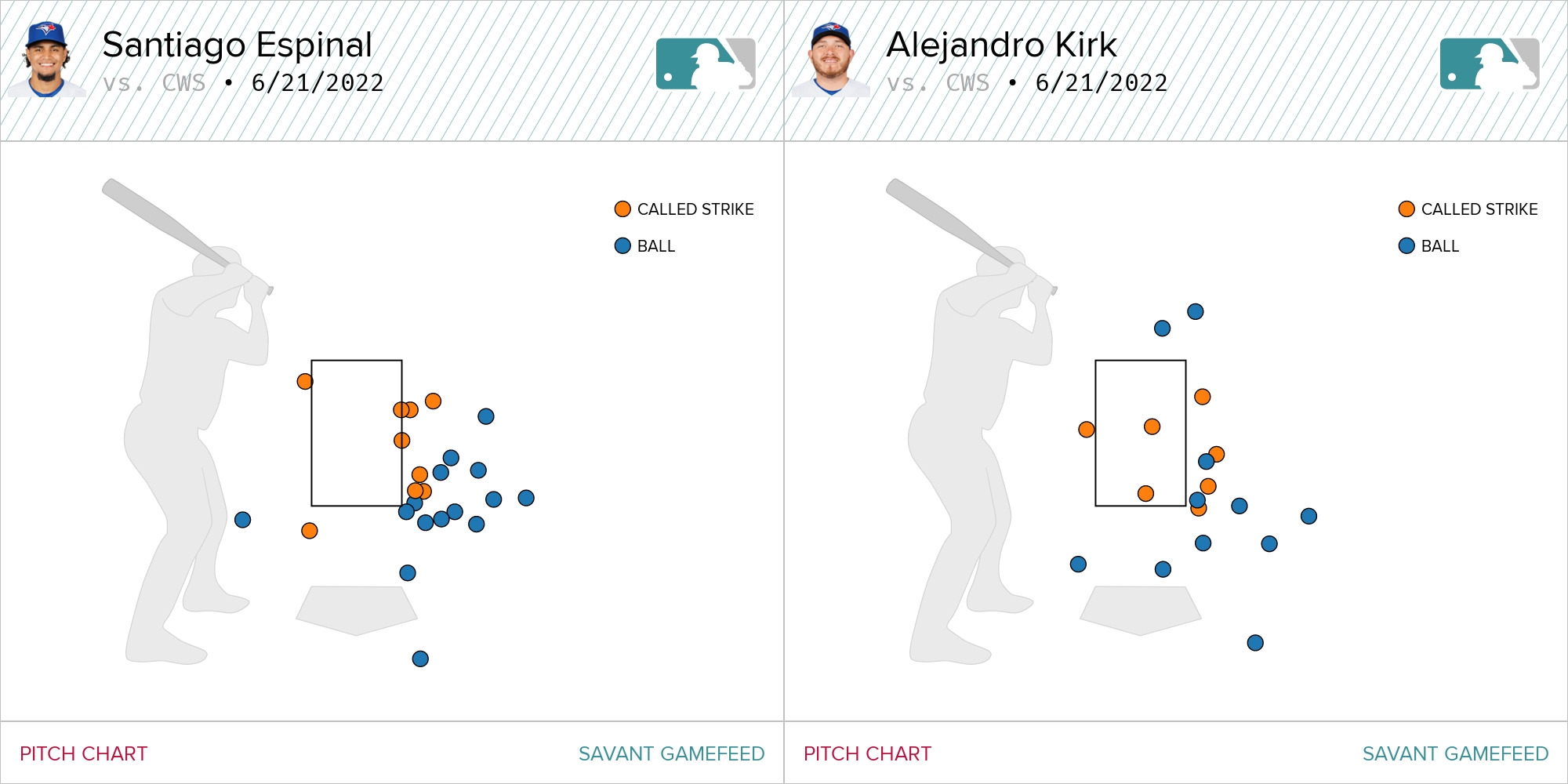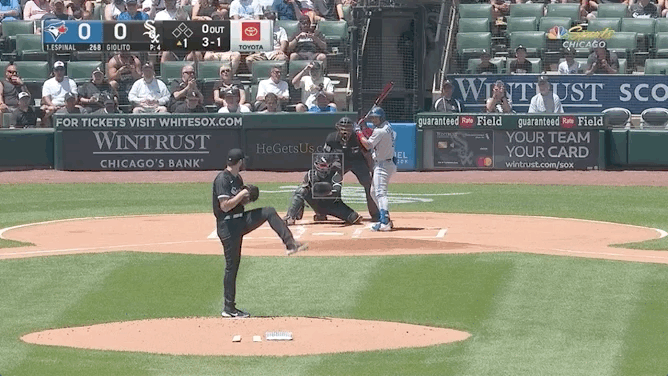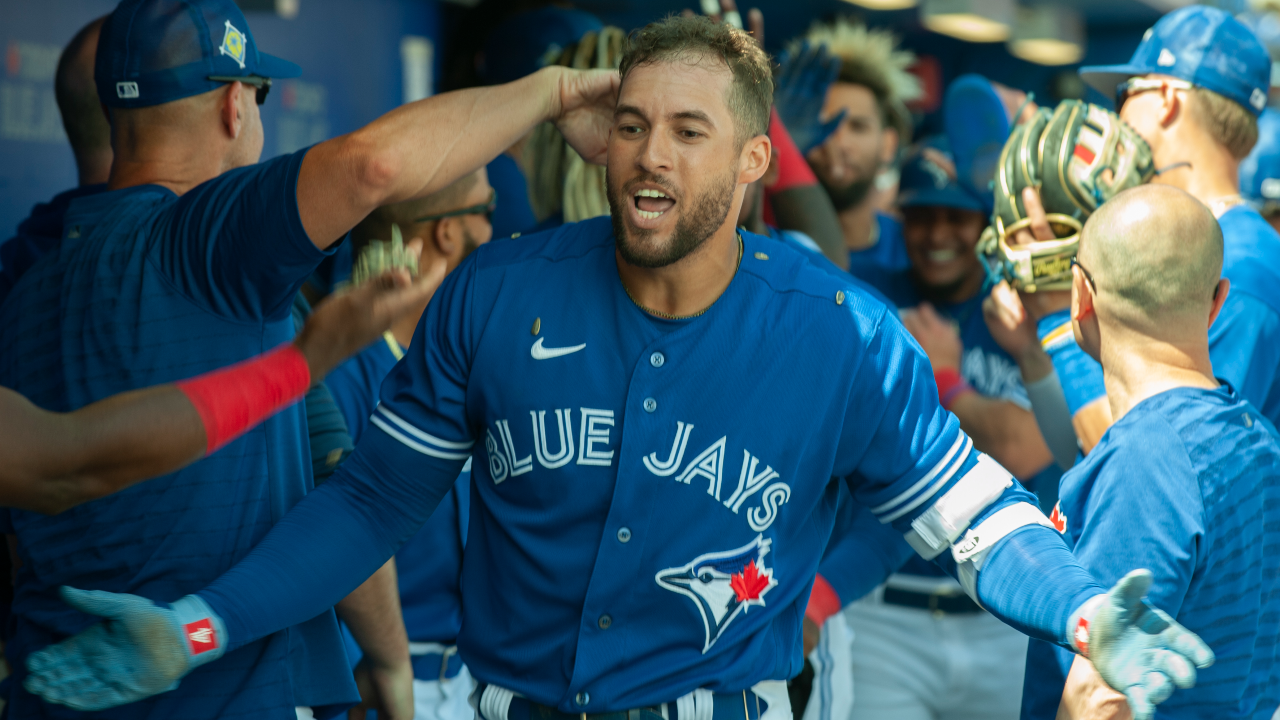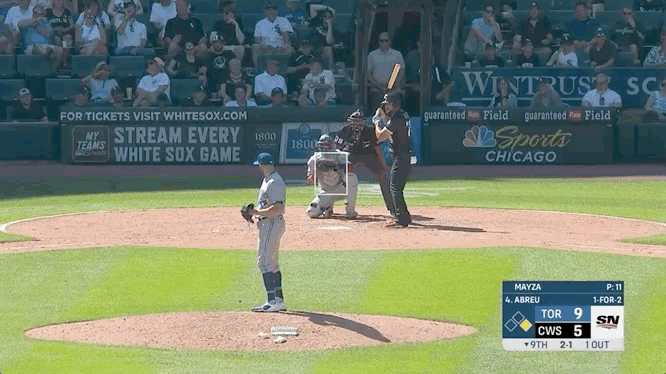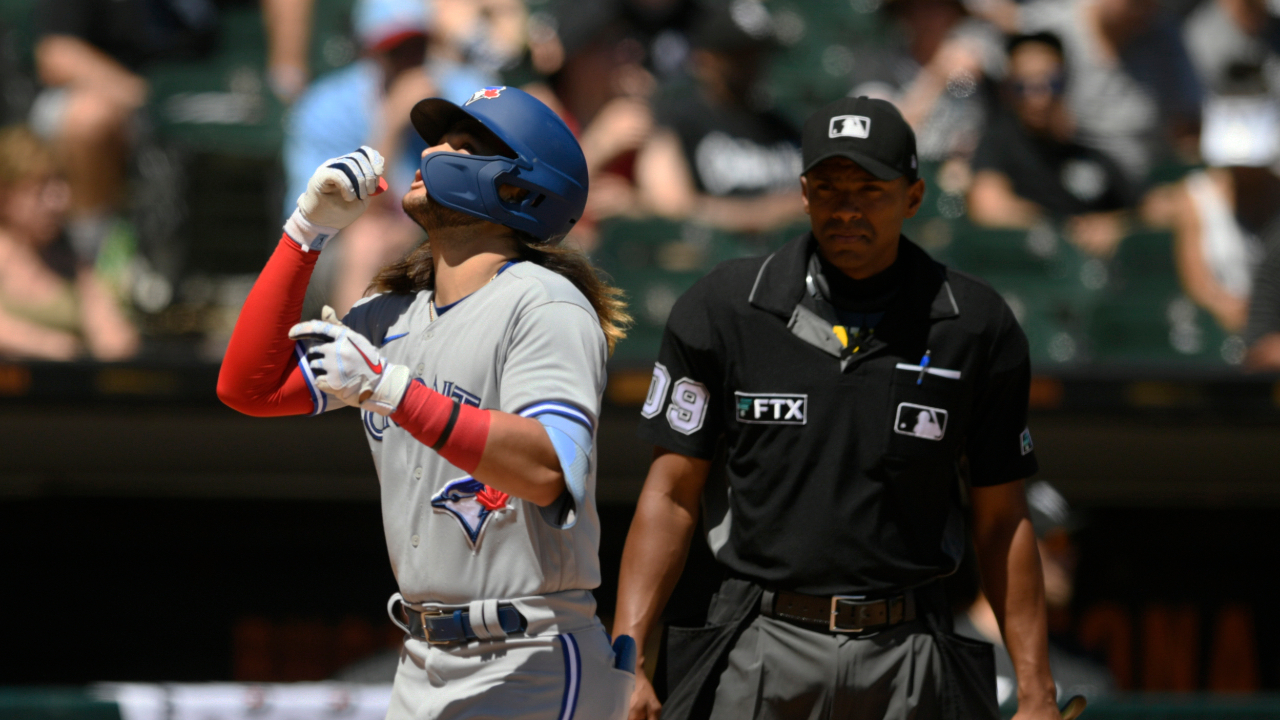
CHICAGO — Tuesday’s chaotic, back-and-forth, 12-inning slugfest between the Chicago White Sox and Toronto Blue Jays took its toll on everyone.
It was the longest game of Toronto’s season; only the eighth time in the last half-decade (a span of 614 games) the club’s played one that lasted longer than four hours and 20 minutes. It was a physical grind. A mental one, too. Not only for the athletes who competed in it, but for the coaches in Toronto’s dugout who were constantly scheming and strategizing as momentum swung back-and-forth through extra-innings when the rules of play change.
“You have to stay ahead of who’s going to be starting the inning at second, who’s going to be coming up. How do you want to play it? Do you want to bunt? Do you want to not bunt and go for it?” says Blue Jays bench coach John Schneider. “Our general rule of thumb is: on the road, you’re playing for two. But that’s dependant on who you have available in the bullpen. And where they are in their order. There’s a lot of moving parts.
“You have to have plan A, B and C based on what they do. If they bunt, you do this. If they get the first guy out, do you walk a guy to set up a double play? Do you just go after them knowing that you have a guy like Romano on the mound? If that’s the case, do you play for one on the road? What if you’re at the bottom of your lineup? All that stuff plays into it.”
And complicating matters Tuesday was the fact everyone in Toronto’s dugout — players and coaches alike — were not-so-subtly steaming over a Doug Eddings strike zone that occasionally encroached on the batter’s boxes. Everyone spent those four hours and 23 minutes of baseball — played in mid-30 degree heat, mind you — on edge. And they weren’t exactly over it come Wednesday.
Don’t believe it? Here’s what happened a mere 13 hours after Tuesday’s game finished, as Blue Jays hitting coach Guillermo Martinez delivered his club’s lineup card to home plate:
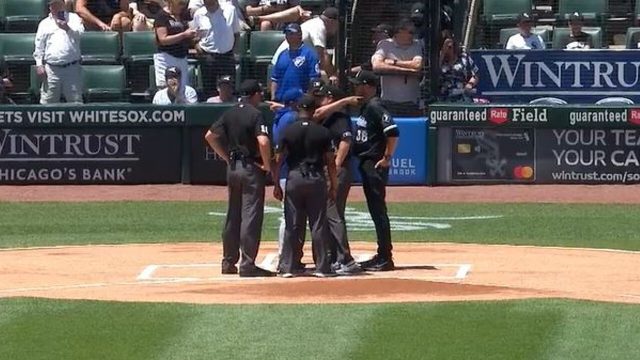
Having slept on it, woken up, eaten a hearty breakfast, and spent his morning preparing for a whole new ballgame, this man was still so aggrieved he couldn’t help but let Eddings know he’d missed 26 calls the night prior, getting himself tossed from a game that hadn’t begun. And if that’s how mad Martinez still was, you can imagine how Wednesday’s leadoff hitter, Santiago Espinal (Tuesday’s pitch chart on the left), and cleanup hitter, Alejandro Kirk (on the right), were feeling:
Of course, maybe that’s why Martinez did it. Blue Jays hitters demonstrated extreme restraint Tuesday, managing their emotions throughout repeated hosing’s, which ultimately helped them continue competing in a game they nearly won. But that does little to take the edge off. If anything, it only elevates the frustration.
It’s a baseball coach’s job to be attuned to the temperature of their team’s clubhouse — not that anyone would’ve needed much EQ to know the Blue Jays were still steamed as they filed in for work ahead of Wednesday’s game. And if hitters couldn’t speak their mind to Eddings themselves without putting their team in a disadvantageous situation, perhaps a coach could.
Maybe that would free Toronto’s hitters up from carrying the frustrations of a night prior into their plate appearances and let them focus on the task at hand. Maybe there was a performance benefit to be gained from it. Maybe Martinez went out there to get tossed.
It’s a theory. And if you seek evidence to support it, look no further than Espinal walking to the plate minutes after Martinez was ejected and opening Wednesday’s game with a five-pitch walk against Lucas Giolito, the final pitch one of those tempting secondaries just off the plate’s outter edge — in an action count, no less — that he was repeatedly gaslit on the night prior:
Three batters later, Kirk drove Espinal in with the game’s first run. And the next time he came to the plate, the likely all-star catcher worked a 3-0 count before lacing a Giolito fastball 414-feet over the left-centre field wall:
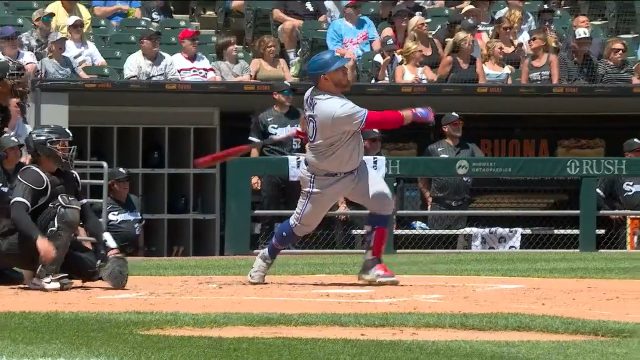
An inning later, Espinal was back up fighting off a tough, two-strike fastball before lining a single into left, extending a two-out rally and loading the bases for Bo Bichette. Which is when the Blue Jays shortstop laid off two tough pitches just outside the zone — correctly called balls — before blowing the game wide open with a 388-foot blast:
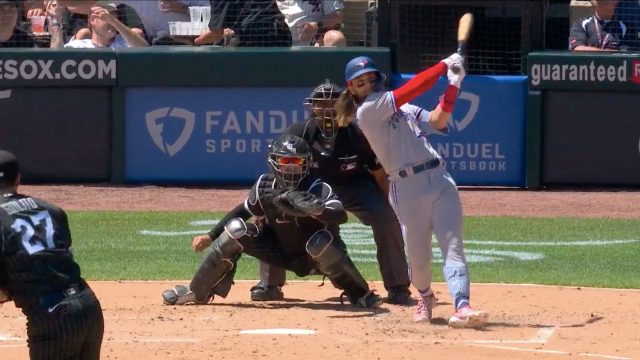
“It was unexpected, for sure. I know some guys were a little bit fired up,” Bichette said of Martinez’s ejection. “I’m proud of the guys. Come out here after a tough night, quick turnaround, everybody was tired. To get out here and score quick and score a lot was good to see.”
Look, you don’t want to read too much into it. Martinez getting tossed and the Blue Jays winning, 9-5, were certainly correlated events, but very unlikely causal ones. Our minds love finding patterns, no matter how flimsy, and using them to draw sweeping conclusions. For all we know, the Blue Jays could’ve won by more if Martinez was in the dugout coaching.
But what we do know is members of Toronto’s coaching staff began Wednesday thinking about how its players would respond to Tuesday’s gutting loss — and how to put them in the best possible position to succeed.
“After a night like that, guys come in and you naturally have a little bit of a slow start. But you’ve got to hopefully create the energy — or sometimes force it — to where it’s, ‘Hey, at 1:10 it’s ready to roll. It’s a new day,’” Schneider said. “A game like last night does change what you may do typically. Based on fatigue, based on who’s in there and how you can maximize their skillset. If it’s trying to jump start an offence early or if it’s trying to be a little bit more aggressive on the bases, whatever it is. So, for us as coaches, it’s just making sure that the energy level is right.”
Of course, if momentum’s only as good as the next day’s starter, energy is, too. And on Wednesday that starter was Ross Stripling, the unassuming swingman who hasn’t only been a replacement for Hyun Jin Ryu in the Blue Jays rotation, but an upgrade.
Leaning on four-seamers and sliders, with just enough changeups, curveballs, and sinkers sprinkled around the zone to keep hitters honest, Stripling gave his team six innings of one-run ball on a typically efficient 87 pitches. Stripling’s changeup has been his best out pitch so far this season, but throwing it often to a lineup stacked with dangerous right-handed hitters was never going to be a recipe for success. So, as he does, Stripling shapeshifted according to the scouting reports he was presented with.
“I go through each hitter with Pete Walker, [Gabriel] Moreno, and some of our guys that put the scouting reports together,” Stripling said. “Fastball lanes. Up, down, in, out. Slider, curveball, changeup. What gets the ball on the ground? What misses the barrel? What misses the bat? All that good stuff.
“As far as right vs. left, the biggest thing that I look at now is, ‘Is the changeup a good option?’ I’m getting to where I’m confident to pretty much throw it to anyone. But there are some guys that do hit right-on-right changeups well. Including [the White Sox.]They have a couple of guys that hit right-on-right changeups well. So, I still threw a decent amount of them. Maybe not as much as I have in past starts. But I’m basically just going through each hitter and making sure that I have a good plan for each one.”
Thanks to that design, Stripling earned swinging strikes on fastballs, breaking balls, and changeups; he earned called strikes with four of his five pitches; he allowed only one ball in play with an exit velocity over 100-m.p.h. He dropped his ERA over his last 10 outings — four of them starts, six in relief — to 1.82. He was exactly what his team needed.
Things were going so well — and, perhaps, circumstances were so dire in Toronto’s taxed bullpen — that the Blue Jays even extended Stripling past the two-trips-through cap he’d pitched under in each of his eight prior starts this season. And maybe it says something that Stripling got one of his toughest battles of the day during that third trip from Andrew Vaughn, who just missed a full-count slider left up and over the plate, before surrendering his lone run when Luis Robert ambushed a first-pitch curveball to drive in Josh Harrison, who led off with a single.
Then again, that’s the nice thing about being on a coaching staff when you’re up by a touchdown. You can take those risks. And with an off-day following, you can call on leverage relievers like David Phelps and Adam Cimber to help carry a lopsided lead home.
At least, that was the design. But Phelps allowed a run in the seventh, and Cimber had all kinds of trouble missing bats in the eighth, getting drawn into long battles and allowing a series of soft singles as the White Sox scratched across a couple more. Cimber eventually got Adam Haseley to hit what should have been an inning-ending double play grounder with the bases loaded, but Espinal and Bichette got their wires crossed at second and failed to record an out:
Enter Trent Thornton, thrust into fireman duty in a beleaguered bullpen he’s led this month in both appearances and innings pitched. A pop-up and groundball later, he had the Blue Jays out of it. That led to Tim Mayza, pitching on a second consecutive day, and fourth in the last five, to try to grind through the final three outs.
Mayza allowed a lead-off single. Then he struck out a batter. Then he took a 108-m.p.h. Jose Abreu comebacker off the left hip.
Again, that’s a 108-m.p.h. cannonball. And Mayza’s only response was to calmly make the out at first. He swears it didn’t hurt too much in the moment. Adrenaline was flowing. He figures maybe his belt buckle saved him. But neither here nor there, after being given about 90 seconds to collect himself, Mayza earned the final one of the game with his very next pitch.
It could never be easy, right? Of course, you don’t get into baseball coaching — baseball, period — if you want it to be easy. Blue Jays coaches began their days thinking about their team’s energy level. Thinking about how they could get it to the right place for a game that started only 11 hours after one of their season’s toughest losses. Schneider took one approach; Martinez, another. All that matters is it worked.


